By Alex Trukan
Clearing and filling space is one of the principles of play that can be used across all age groups and levels. It can be used to create space in certain areas, get specific players on the ball as well as enable a team to play forwards. Clearing and filling is simple to understand but not easy to execute with quality. It is based on one player leaving certain space to then allow other player to arrive in it. Ideally, the player leaving the space will drag the opposition player with him, which will allow a player that fills it to receive the ball with no pressure around. If this is not possible and both clearing and filling players are marked, it will still allow them to create more space as the defending players are in a reactive position and therefore delayed.
Most of clearing and filling space will happen in front of the ball. This will be both in their own half during build up play as well as the opposition half where the spaces are tighter and defending team is more compact. Movement can be initiated by one player making a movement to clear but also this rotation might happen at the same time. The key here is the timing allowing the ‘filler’ to arrive in the created space as the ball is played into him.
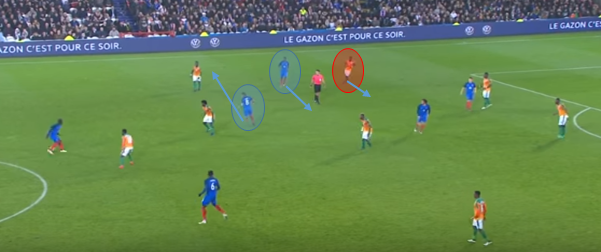
As the rotation is made, the space for the ‘filler’ might not be in the exact same place as the starting position of the ‘clearer’. This is due to movements of the opposition defenders which might react to clearing and filling in different ways. The obvious one is when the created space allows the filler to receive it. More complex variations might include space in behind the opposition unit to pass into or space to try 1v1 duel.
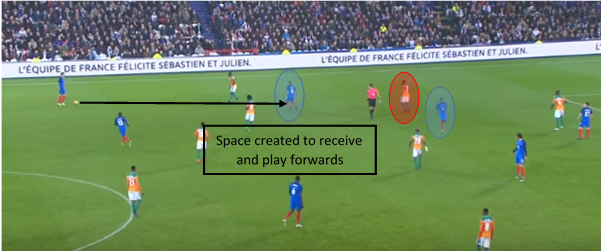
Clearing and filling movements might be also used to create a better passing angle. As the clearing player moves towards the ball, he will often move the opposition player which might allow a new passing line to be used. Clearing movement towards the ball can be especially useful around the penalty box to drag opposition midfielders away and isolate striker who can fill in the space.
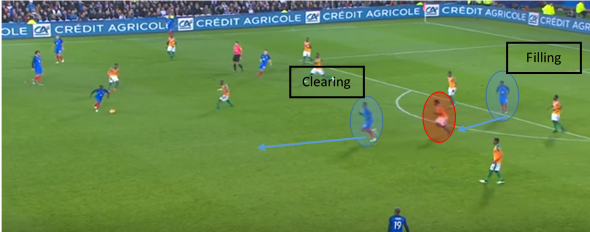
As the clearing movement is made and ‘filler’ receives the ball, the player that cleared the space might then look to support the player on the ball. Players around the ball would be looking to offer a passing angle and make movements to penetrate forward.
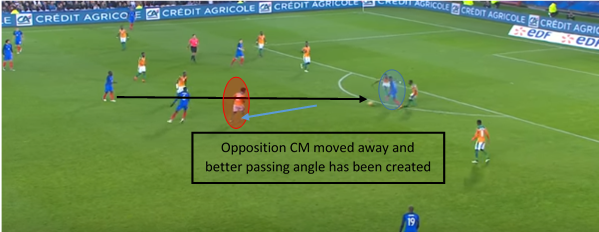
It is a crucial skill to know when to clear and when to remain in the same space. If there is space available to be exploited by another player in a better position to do it, only the most intelligent ones will stay away, allowing it to be used by a different player making the run. It is often standing still that is the best ‘movement’ to create space. However, only if it’s used strategically and with a reason behind it.
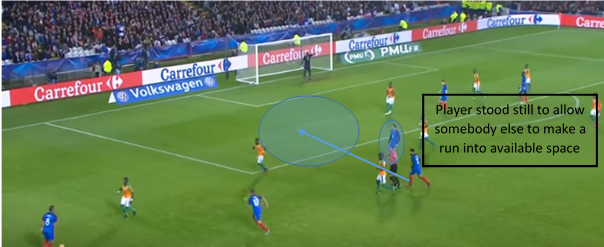
As it can be seen below, standing still by highlighted player prevented opposition defender from following the player that has made a forward run. This has helped him in turn to receive the ball with less pressure around and penetrate into the penalty box.
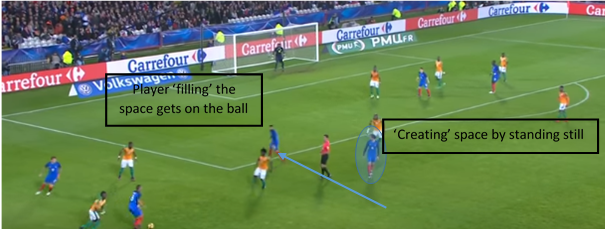
During the game, some of the players might need little triggers from the coach to create space using these type of movements. This is why, the phrase ‘clearing and filling’ is useful as it sticks, it’s simple and can be easily used during the game – Who is clearing? Who is filling?
By Alex Trukan, Development Coach, Nottingham Forest
@AlexTrukan


